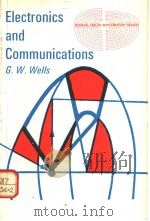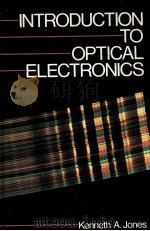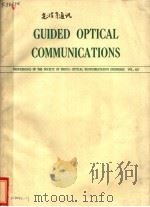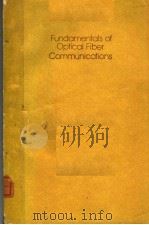《OPTICAL ELECTRONICS IN MODERN COMMUNICATIONS》
| 作者 | AMNON YARIV 编者 |
|---|---|
| 出版 | 未查询到或未知 |
| 参考页数 | 744 |
| 出版时间 | 没有确切时间的资料 目录预览 |
| ISBN号 | 7505379593 — 求助条款 |
| PDF编号 | 812399648(仅供预览,未存储实际文件) |
| 求助格式 | 扫描PDF(若分多册发行,每次仅能受理1册) |
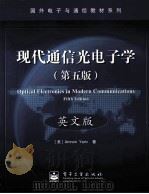
第1章电磁理论1
第2章光线和光束的传输39
第3章光束在光纤中的传输76
第4章光学谐振器121
第5章辐射与原子系统的相互作用159
第6章激光振荡理论及其在连续区和脉冲区的控制185
第7章一些特殊的激光器系统242
第8章二次谐波产生和参量振荡273
第9章激光束的电光调制326
第10章光产生和光探测中的噪声372
第11章光辐射的探测413
第12章光和声的相互作用474
第13章光学介电波导——周期性波导中的模传输和模耦合491
第14章全息术和光学数据存储541
第15章半导体激光器的理论和应用558
第16章先进的半导体激光器——量子阱激光器,分布反馈式激光器,垂直腔表面发射激光器604
第17章相位共轭光学的理论和应用639
第18章光折变介质中的双光束耦合和相位共轭668
第19章光孤子693
第20章量子光学、量子噪声和压缩态的经典处理703
Chapter 1ELECTROMAGNETIC THEORY1
1.0 Introduction1
1.1Complex-Function Formalism1
Time-Averaging of Sinusoidal Products3
1.2Considerations of Energy and Power in Electromagnetic Fields3
Dipolar Dissipation in Harmonic Fields5
1.3Wave Propagation in Isotropic Media7
Power Flow in Harmonic Fields10
1.4Wave Propagation in Crystals—The Index Ellipsoid12
Birefringence13
Index Ellipsoid14
Normal (index) Surfaces17
1.5Jones Calculus and Its Application to Propagation in Optical Systems with Birefringent Crystals17
Intensity Transmission24
Circular Polarization Representation26
Faraday Rotation27
1.6Diffraction of Electromagnetic Waves30
PROBLEMS34
REFERENCES38
Chapter 2THE PROPAGATION OF RAYS AND BEAMS39
2.0 Introduction39
2.1Lens Waveguide39
Identical-Lens Waveguide44
2.2Propagation of Rays Between Mirrors45
Reentrant Rays45
2.3 Rays in Lenslike Media46
2.4 Wave Equation in Quadratic Index Media48
2.5 Gaussian Beams in a Homogeneous Medium50
2.6Fundamental Gaussian Beam in a Lenslike Medium—The ABCD Law53
Transformation of the Gaussian Beam—The ABCD Law54
2.7 A Gaussian Beam in Lens Waveguide57
2.8 High-Order Gaussian Beam Modes in a Homogeneous Medium57
2.9 High-Order Gaussian Beam Modes in Quadratic Index Media58
Pulse Spreading in Quadratic Index Glass Fibers63
2.10 Propagation in Media with a Quadratic Gain Profile65
2.11Elliptic Gaussian Beams66
Elliptic Gaussian Beams in a Quadratic Lenslike Medium69
2.12Diffraction Integral for a Generalized Paraxial A,B,C,D System70
PROBLEMS72
REFERENCES74
Chapter 3PROPAGATION OF OPTICAL BEAMS IN FIBERS76
3.0 Introduction76
3.1 Wave Equations in Cylindrical Coordinates77
3.2The Step-Index Circular Waveguide80
Mode Characteristics and Cutoff Conditions83
3.3Linearly Polarized Modes89
Power Flow and Power Density96
3.4Optical Pulse Propagation and Pulse Spreading in Fibers98
Frequency Chirp105
3.5Compensation for Group Velocity Dispersion106
Compensation for Pulse Broadening by Fibers with Opposite Dispersion108
Compensation for Pulse Broadening by Phase Conjugation108
3.6 Analogy of Spatial Diffraction and Temporal Dispersion113
3.7Attenuation in Silica Fibers115
PROBLEMS116
REFERENCES119
Chapter 4OPTICAL RESONATORS121
4.0Introduction121
Mode Density in Optical Resonators122
4.1 Fabry-Perot Etalon125
4.2 Fabry-Perot Etalons as Optical Spectrum Analyzers129
4.3Optical Resonators with Spherical Mirrors132
Optical Resonator Algebra133
The Symmetrical Mirror Resonator134
4.4 Mode Stability Criteria135
4.5Modes in a Generalized Resonator—The Self-Consistent Method138
Stability of the Resonator Modes139
4.6 Resonance Frequencies of Optical Resonators140
4.7 Losses in Optical Resonators143
4.8Optical Resonators—Diffraction Theory Approach145
Equivalent Resonator Systems149
4.9Mode Coupling154
Equivalent Resonator Systems149
Mode Solution by Numerical Iteration151
PROBLEMS156
REFERENCES158
Chapter 5INTERACTION OF RADIATION AND ATOMIC SYSTEMS159
5.0 Introduction159
5.1Spontaneous Transitions Between Atomic Levels—Homogeneous and Inhomogeneous Broadening159
The Concept of Spontaneous Emission160
Lineshape Function—Homogeneous and Inhomogeneous Broadening161
Homogeneous and Inhomogeneous Broadening162
5.2 Induced Transitions165
5.3 Absorption and Amplification168
5.4 Derivation of x'(v)171
5.5 The Significance of x(v)174
5.6 Gain Saturation in Homogeneous Laser Media176
5.7Gain Saturation in Inhomogeneous Laser Media179
PROBLEMS182
REFERENCES183
Chapter 6THEORY OF LASER OSCILLATION AND ITS CONTROL IN THE CONTINUOUS AND PULSED REGIMES185
6.0 Introduction185
6.1 Fabry-Perot Laser185
6.2 Oscillation Frequency189
6.3 Three- and Four-Level Lasers192
6.4Power in Laser Oscillators194
Rate Equations194
6.5 Optimum Output Coupling in Laser Oscillators197
6.6Multimode Laser Oscillation and Mode Locking201
Mode Locking203
Methods of Mode Locking206
Theory of Mode Locking210
6.7Mode Locking in Homogeneously Broadened Laser Systems212
Transfer Function of the Gain Medium213
Transfer Function of the Loss Cell213
Mode Locking by Phase Modulation217
6.8Pulse Length Measurement and Narrowing of Chirped Pulses218
Pulse Narrowing by Chirping and Compression222
The Grating Pair Compressor226
6.9Giant Pulse (Q-switched) Lasers227
Methods of Q-Switching233
6.10Hole-Burning and the Lamb Dip in Doppler-Broadened Gas Lasers235
PROBLEMS238
REFERENCES239
Chapter 7SOME SPECIFIC LASER SYSTEMS242
7.0 Introduction242
7.1 Pumping and Laser Efficiency242
7.2Ruby Laser243
7.3 Nd3+:YAG Laser248
7.4 Neodymium-Glass Laser251
7.5 He-Ne Laser255
7.6Carbon Dioxide Laser257
7.7 Ar+ Laser259
7.8 Excimer Lasers260
7.9 Organic-Dye Lasers262
7.10 High-Pressure Operation of Gas Lasers267
7.11The Er-Silica Laser270
PROBLEMS270
REFERENCES270
Chapter 8SECOND-HARMONIC GENERATION AND PARAMETRIC OSCILLATION273
8.0 Introduction273
8.1 On the Physical Origin of Nonlinear Polarization273
8.2 Formalism of Wave Propagation in Nonlinear Media282
8.3Optical Second-Harmonic Generation285
Phase-Matching in Second-Harmonic Generation286
Experimental Verification of Phase-Matching290
Second-Harmonic Generation with Focused Gaussian Beams291
Second-Harmonic Generation with a Depleted Input293
8.4 Second-Harmonic Generation Inside the Laser Resonator295
8.5 Photon Model of Second-Harmonic Generation299
8.6 Parametric Amplification300
8.7 Phase-Matching in Parametric Amplification306
8.8 Parametric Oscillation308
8.9 Frequency Tuning in Parametric Oscillation311
8.10 Power Output and Pump Saturation in Optical Parametric Oscillators314
8.11 Frequency Up-Conversion316
8.12Quasi Phase-Matching319
Quasi Phase-Matching in Crystal Dielectric Waveguides320
PROBLEMS322
REFERENCES323
Chapter 9ELECTROOPTIC MODULATION OF LASER BEAMS326
9.0 Introduction326
9.1Electrooptic Effect326
The General Solution333
9.2 Electrooptic Retardation341
9.3 Electrooptic Amplitude Modulation344
9.4 Phase Modulation of Light347
9.5 Transverse Electrooptic Modulators348
9.6High-Frequency Modulation Considerations349
Transit-Time Limitations to High-Frequency Electrooptic Modulation350
Traveling-Wave Modulators351
9.7 Electrooptic Beam Deflection353
9.8Electrooptic Modulation—Coupled Wave Analysis356
The Wave Equation358
9.9Phase Modulation360
Amplitude Modulation (advanced topic)364
PROBLEMS367
REFERENCES370
Chapter 10NOISE IN OPTICAL DETECTION AND GENERATION372
10.0 Introduction372
10.1Limitations Due to Noise Power373
Measurement of Optical Power373
10.2Noise—Basic Definitions and Theorems376
Wiener-Khintchine Theorem378
10.3 The Spectral Density Function of a Train of Randomly Occurring Events379
10.4 Shot Noise381
10.5Johnson Noise383
Statistical Derivation of Johnson Noise386
10.6 Spontaneous Emission Noise in Laser Oscillators388
10.7Phasor Derivation of the Laser Linewidth393
The Phase Noise393
The Laser Field Spectrum396
10.8Coherence and Interference401
Delayed Self-Heterodyning of Laser Fields404
Special Case td>>Tc406
10.9Error Probability in a Binary Pulse Code Modulation System407
PROBLEMS410
REFERENCES411
Chapter 11DETECTION OF OPTICAL RADIATION413
11.0 Introduction413
11.1 Optically Induced Transition Rates414
11.2 Photomultiplier415
11.3Noise Mechanisms in Photomultipliers417
Mimimum Detectable Power in Photomultipliers—Video Detection418
Signal-Limited Shot Noise420
11.4Heterodyne Detection with Photomultipliers421
Limiting Sensitivity as a Result of the Particle Nature of Light423
11.5Photoconductive Detectors425
Generation Recombination Noise in Photoconductive Detectors428
Heterodyne Detection in Photoconductors430
11.6 The p-n Junction432
11.7Semiconductor Photodiodes436
Frequency Response of Photodiodes438
Detection Sensitivity of Photodiodes443
11.8 The Avalanche Photodiode446
11.9 Power Fluctuation Noise in Lasers449
11.10 Infrared Imaging and Background-Limited Detection454
11.11 Optical Amplification in Fiber Links461
PROBLEMS470
REFERENCES471
Chapter 12INTERACTION OF LIGHT AND SOUND474
12.0 Introduction474
12.1 Scattering of Light by Sound474
12.2Particle Picture of Bragg Diffraction of Light by Sound477
Doppler Derivation of the Frequency Shift478
12.3 Bragg Diffraction of Light by Acoustic Waves—Analysis479
12.4Deflection of Light by Sound486
PROBLEMS489
REFERENCES490
Chapter 13PROPAGATION AND COUPLING OF MODES IN OPTICAL DIELECTRIC WAVEGUIDES—PERIODIC WAVEGUIDES491
13.0 Introduction491
13.1Waveguide Modes—A General Discussion492
Confined Modes in a Symmetric Slab Waveguide494
13.2TE and TM Modes in an Asymmetric Slab Waveguide499
TE Modes499
TM Modes501
13.3 A Perturbation Theory of Coupled Modes in Dielectric Optical Waveguides502
13.4Periodic Waveguide504
Some General Properties of the Coupled Mode Equations506
13.5Coupled-Mode Solutions509
Numerical Example512
13.6 Periodic Waveguides as Optical Filters and Reflectors—Periodic Fibers512
13.7 Electrooptic Modulation and Mode Coupling in Dielectric Waveguides515
13.8 Directional Coupling521
13.9 The Eigenmodes of a Coupled Waveguide System (supermodes)526
13.10 Laser Arrays531
PROBLEMS538
REFERENCES539
Chapter 14HOLOGRAPHY AND OPTICAL DATA STORAGE541
14.0 Introduction541
14.1The Mathematical Basis of Holography542
The Holographic Process Viewed as Bragg Diffraction542
Basic Holography Formalism545
14.2The Coupled Wave Analysis of Volume Holograms546
Multihologram Recording and Readout—Crosstalk549
Wavelength Multiplexing552
Crosstalk in Data-Bearing Holograms552
PROBLEMS556
REFERENCES557
Chapter 15SEMICONDUCTOR LASERS—THEORY AND APPLICATIONS558
15.0 Introduction558
15.1Some Semiconductor Physics Background559
The Fermi-Dirac Distribution Law562
15.2 Gain and Absorption in Semiconductor (laser) Media565
15.3 GaAs/Ga1—xA1xAs Lasers570
15.4Some Real Laser Structures577
Quaternary GaInAsP Semiconductor Lasers578
Power Output of Injection Lasers581
15.5 Direct-Current Modulation of Semiconductor Lasers582
15.6Gain Suppression and Frequency Chirp in Current-Modulated Semiconductor Lasers587
Amplitude-phase coupling592
The Field Spectrum of a Chirping Laser594
15.7Integrated Optoelectronics596
PROBLEMS599
REFERENCES601
Chapter 16ADVANCED SEMICONDUCTOR LASERS: QUANTUM WELL LASERS,DISTRIBUTED FEEDBACK LASERS, VERTICAL CAVITY SURFACE EMITTING LASERS604
16.0 Introduction604
16.1Carriers in Quantum Wells (Advanced Topic)605
The Density of States608
16.2Gain in Quantum Well Lasers610
Multiquantum Well Laser614
16.3Distributed Feedback Lasers616
Oscillation Condition619
Gain-Coupled Distributed Feedback Lasers626
16.4Vertical Cavity Surface Emitting Semiconductor Lasers628
The Oscillation Condition of a Vertical Cavity Laser630
The Bragg Mirror631
The Oscillation Frequencies633
PROBLEMS636
REFERENCES637
Chapter 17PHASE CONJUGATE OPTICS—THEORY AND APPLICATIONS639
17.0 Introduction and Background639
17.1 The Distortion Correction Theorem640
17.2 The Generation of Phase Conjugate Waves641
17.3The Coupled-Mode Formulation of Phase Conjugate Optics643
Some Consideration of Units648
17.4 Some Experiments Involving Phase Conjugation649
17.5 Optical Resonators with Phase Conjugate Reflectors651
17.6The ABCD Formalism of Phase Conjugate Optical Resonators653
The ABCD Matrix of a Phase Conjugate Mirror653
17.7 Dynamic Distortion Correction Within a Laser Resonator655
17.8 Holographic Analogs of Phase Conjugate Optics657
17.9 Imaging Through a Distorted Medium659
17.10 Image Processing by Four-Wave Mixing661
17.11 Compensation of Fiber Dispersion665
PROBLEMS665
REFERENCES665
Chapter 18TWO-BEAM COUPLING AND PHASE CONJUGATION IN PHOTOREFRACTIVE MEDIA668
18.0 Introduction668
18.1 Two-Wave Coupling in a Fixed Grating669
18.2The Photorefractive Effect—Two Beam Coupling671
The Grating Formation680
Refractive Two-Beam Coupling681
Two-Beam Coupling—Symmetric Geometry683
18.3 Photorefractive Self-Pumped Phase Conjugation684
18.4Applications of Photorefractive Oscillators686
Rotation Sensing686
Mathematical and Logic Operations of Images688
PROBLEMS691
REFERENCES691
Chapter 19OPTICAL SOLITONS693
19.0 Introduction693
19.1The Mathematical Description of Solitons693
The Wave Equation695
Numerical Example—Optical Solitons in Silica Fibers699
PROBLEMS700
REFERENCES701
Chapter 20A CLASSICAL TREATMENT OF QUANTUM OPTICS, QUANTUM NOISE, AND SQUEEZING703
20.0 Introduction703
20.1The Quantum Uncertainty Goes Classical703
The Uncertainty Principle704
The Energy of an Electromagnetic Mode709
Uncertainty in Energy709
Phase Uncertainty710
Fluctuation of Photoelectron Number710
Minimum Detectable Optical Power Increment711
20.2 Squeezing of Optical Fields712
Experimental Demonstrations of Squeezing716
REFERENCES721
Appendix ATHE KRAMERS-KRONIG RELATIONS723
Appendix BTHE ELECTROOPTIC EFFECT IN CUBIC 43m CRYSTALS726
Appendix CNOISE IN TRAVELING WAVE LASER AMPLIFIERS730
Appendix DTRANSFORMATION OF A COHERENT ELECTROMAGNETIC FIELD BY A THIN LENS734
Index737
《OPTICAL ELECTRONICS IN MODERN COMMUNICATIONS》由于是年代较久的资料都绝版了,几乎不可能购买到实物。如果大家为了学习确实需要,可向博主求助其电子版PDF文件。对合法合规的求助,我会当即受理并将下载地址发送给你。
高度相关资料
-
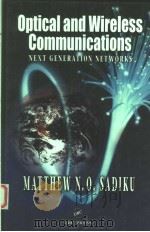
- OPTICAL AND WIRELESS COMMUNICATIONS
- CRC PRESS
-
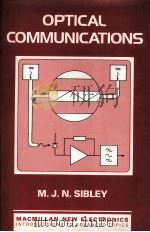
- Optical Communications
- 1990 MACMILLAN EDUCATION LTD
-

- Modern digital Communications
- 1977 TAB BOOKS
-
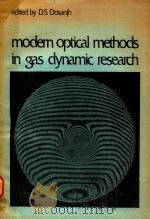
- MODERN OPTICAL METHODS IN GAS DYNAMIC RESEARCH
- 1971 PLENUM PRESS
-
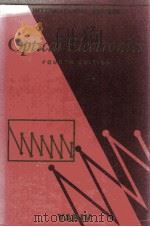
- OPTICAL ELECTRONICS FOURTH EDITION
- 1971 HARCOURT BRACE JOVANOVICH COLLEGE PUBLISHRS
提示:百度云已更名为百度网盘(百度盘),天翼云盘、微盘下载地址……暂未提供。➥ PDF文字可复制化或转WORD



